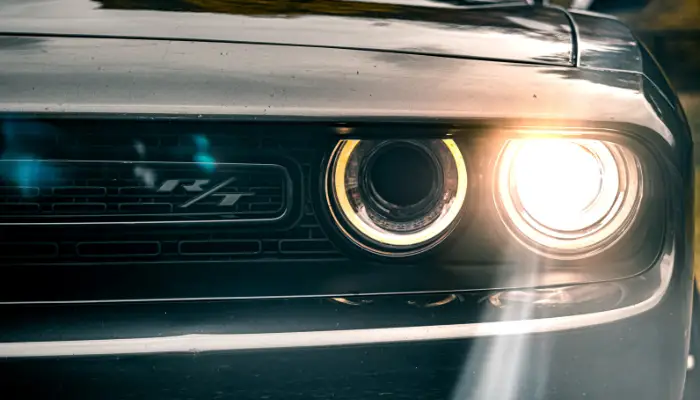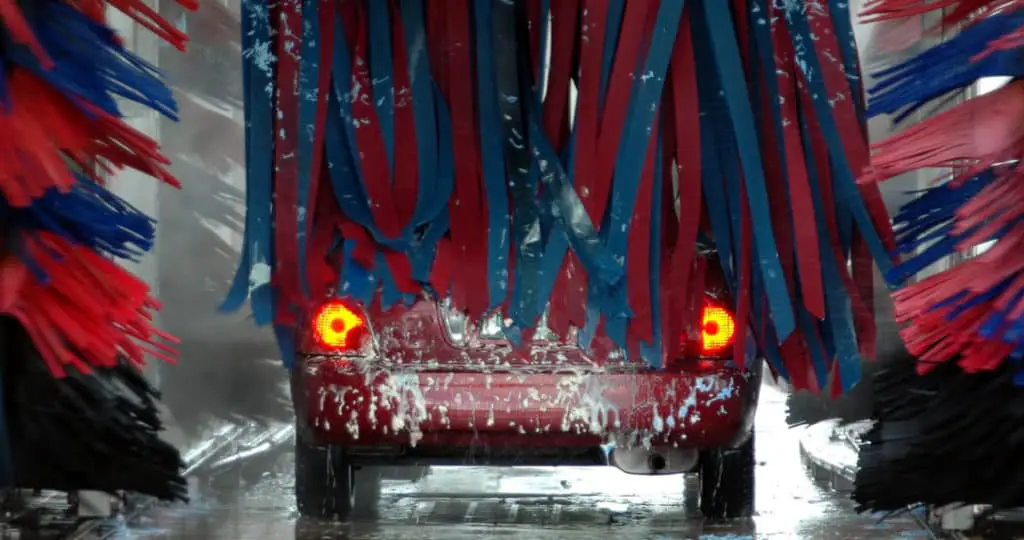- How to Clean Car Carpets Quickly (Without An Extractor) - July 10, 2024
- Can You Touch Up Clear Coat On A Car? Yes and No (Here’s Why) - November 25, 2023
- How To Wax A Car By Hand (For Beginners) - November 14, 2023
Last Updated on January 19, 2025 by Nate Schnell
Headlights are essential for safe driving, providing a clear and well-lit view of the road. However, condensation or moisture inside the headlight assembly can lead to foggy lenses, reduced visibility, and even potential damage to the assembly if left unresolved. Understanding the causes of condensation and taking the right steps to address and prevent it can save you time, money, and frustration.
Common Causes of Water Inside Headlight Assemblies
Water can get inside the headlight assembly for several reasons. Condensation is the most common cause and occurs when warm, humid air inside the assembly meets the cooler surface of the lens. This is a natural process, often triggered by temperature changes, and usually resolves on its own when the headlights are turned on or exposed to sunlight. However, if condensation persists, it may indicate an underlying issue, such as a small leak or a compromised seal.
Small Leaks
Small leaks can allow water to seep into the assembly. These leaks might result from hairline cracks in the lens, worn seals, or minor imperfections that develop over time. Even small amounts of water entering the headlight can create persistent condensation.
Compromised Seals
Damaged or aging seals between the housing and the lens can lose their effectiveness, allowing moisture to enter. In more severe cases, standing water inside the assembly may point to larger leaks, holes, or missing gaskets, which can cause serious damage to internal components.
Repair or Replace: Deciding the Best Approach
Deciding whether to repair or replace the headlight assembly depends on the severity of the issue. For minor condensation or small leaks, a DIY approach can often resolve the problem. However, extensive damage, such as significant cracks or persistent standing water, might require replacing the entire assembly. This can also be an opportunity to upgrade your headlights, especially if they’ve become cloudy or yellowed due to UV exposure.
How to Remove Moisture from Your Headlights
If you notice condensation or water inside your headlights, follow these steps to dry them out:
Use a Hairdryer or Heat Gun
Apply gentle heat to the headlight assembly using a hairdryer or heat gun to evaporate the moisture. Be sure to keep the heat source moving to avoid overheating and damaging the plastic.
Check and Clear Vents
Most headlight assemblies have small ventilation ports to allow moisture to escape. Clear any obstructions using compressed air to restore proper airflow.
Remove and Inspect the Assembly
For persistent moisture, you may need to remove the headlight assembly from the vehicle. Consult your car’s service manual for detailed instructions on safely disconnecting and removing the assembly. Once removed, inspect the interior for visible cracks, holes, or damaged seals.
Dry and Seal the Assembly
After repairing the assembly, use a lint-free cloth to dry any remaining moisture. Placing silica gel packs inside the assembly can help absorb residual moisture and prevent it from returning. Make sure these packs are positioned securely and do not interfere with the bulbs or lenses.
Preventing Headlight Condensation
Preventing condensation requires regular maintenance and proactive steps. Inspect and clean the vents periodically to ensure they’re functioning correctly. Replace any damaged seals promptly to maintain a watertight barrier. Applying a thin bead of silicone sealant around the edges of the headlight assembly can provide added protection against leaks. Regularly check the assembly for cracks or other signs of wear, and address issues early to avoid more extensive repairs.
When to Seek Professional Help
While DIY fixes for headlight condensation are often effective and inexpensive, there are times when professional help is the best choice. Significant damage to the assembly, such as large cracks or persistent water pooling, may require replacement. Costs can vary depending on your vehicle and the specific issue, but addressing the problem promptly can save money in the long run by preventing further damage.
Conclusion
In most cases, addressing headlight condensation is straightforward. Understanding its causes, taking the appropriate steps to remove moisture, and implementing preventative measures can keep your headlights clear and functional. Regular maintenance, including inspecting seals and cleaning vents, can help ensure that condensation doesn’t become a recurring issue. By staying proactive, you can enjoy safer, clearer driving conditions and extend the life of your headlight assembly.



